#IN VARIOUS FORMS
Explore tagged Tumblr posts
Text
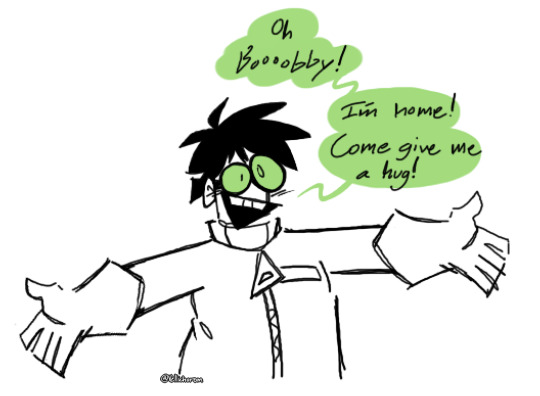
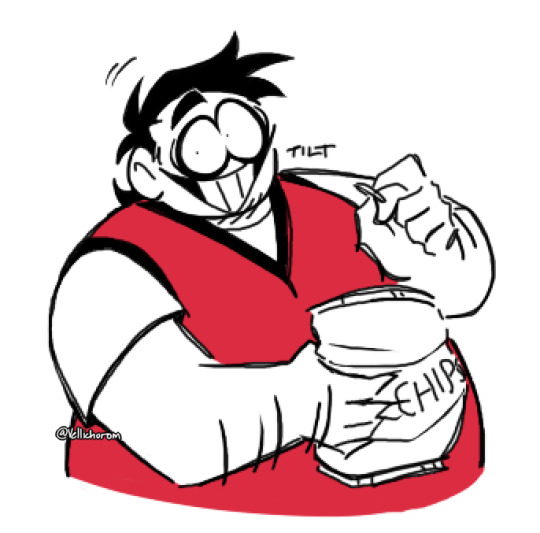
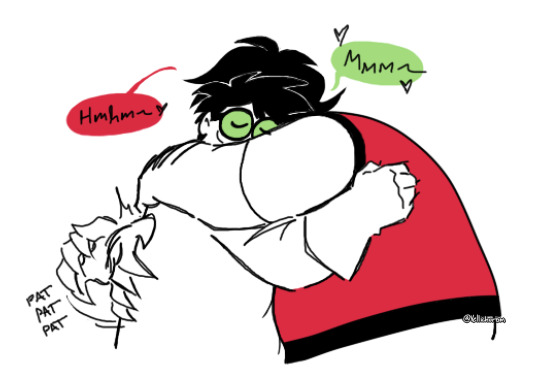
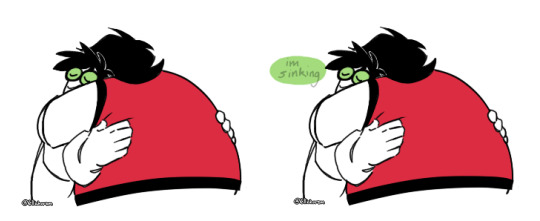
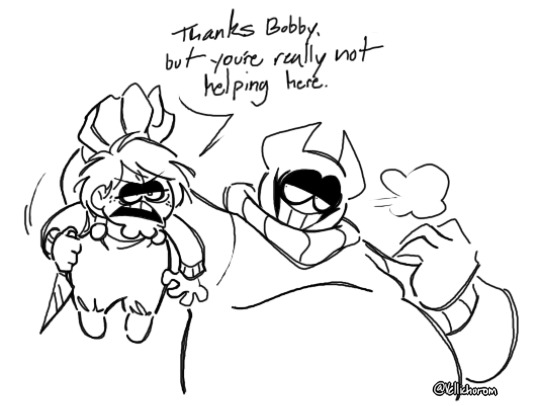

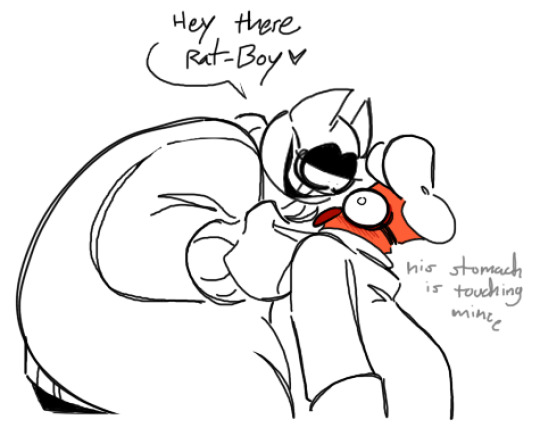

✨🐀🥩 RATSHMEAT 🐀🥩✨
#uwu art#Spooky Month#Spooky Month 5#Spooky Month 4#Spooky Month 3#Bob Velseb#Dexter Erotoph#RatMeat#Spooky Month Bob#Spooky Month Dexter#scopophobia tw#scopophobia cw#// ask to tag#THAT'S ALL. RATSHMEAT#IN VARIOUS FORMS#they're the worst my friend n i have been pairing them off together because they just suck so bad#KIND OF ICONIC TOO BEING THE ONLY KNOWN HUMAN ANTAGONISTS ( besides the cult ) INNIT
1K notes
·
View notes
Note
Sorry to the insta followers BUT IM SO HAPPY THAT YOU'RE HERE 🙏🏾🙏🏾🙏🏾🙏🏾
Ive always been here....
#In various forms#So many ppl like 'oh are you moving over to tumblr' i been here since i was 15#not an art
47 notes
·
View notes
Text

@userdramas EVENT 18: MUSIC
Oh I really do love combining my two favourite genres. Don’t mind me as I put my favourite group on my favourite album of all time

I’ll also add this edit I made to Motionless In White’s Scoring the End of the World album cover under the mark bc I just think It’s neat
#userdramas#Matz#ateez#seonghwa#Hongjoong#art#fanart#kpop#kpop fanart#Matz art#Matz fanart#ateez art#Ateez fanart#Kim Hongjoong#park Seonghwa#three cheers for sweet revenge album artwork has to be the thing I’ve drawn most my whole life#in various forms
36 notes
·
View notes
Text
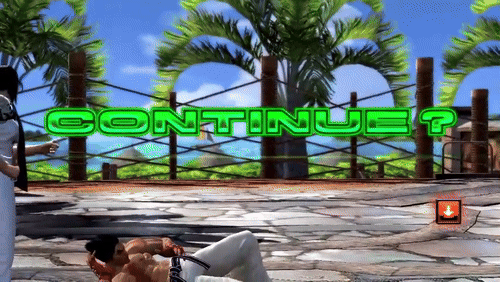
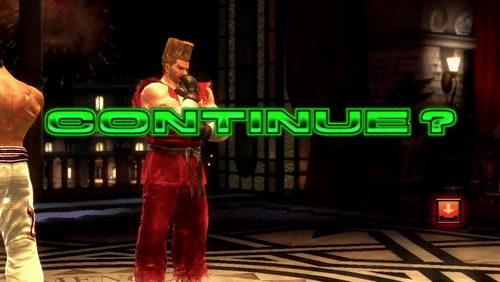
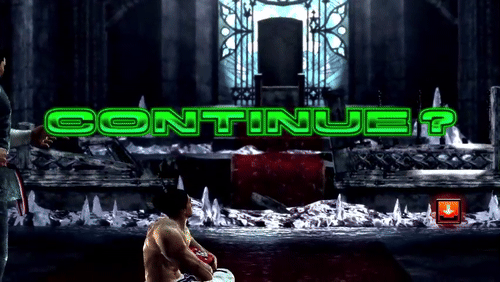
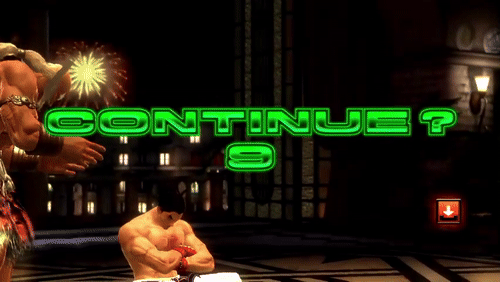
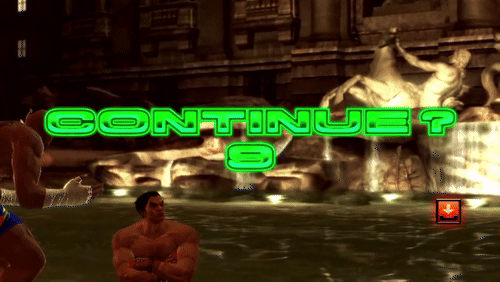
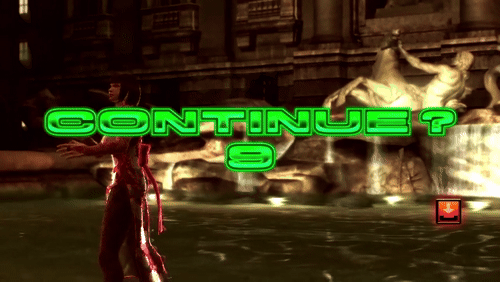
41 notes
·
View notes
Note
That post about villainous love made me think of your King Boo towards Bowser.
Thank you, that's what I was thinking too when I saw it cross my dash :)
#asks#a lot of my comic is that very theme#love and abuse are two of the heaviest topics I cover in it#in various forms
10 notes
·
View notes
Text



In the world of heavy metals, love is denser than hate!
#Poorly drawn SVSSS#SVSSS#luo bingge#luo binghe#ask#Is that right? Two different character tags? I think that is right.#I'm calling myself out with screenshotting the asks with the dates because my full ask box has become a problem I'm determined to solve.#I promise you that if I did not respond to your ask it was because I 1) *really* wanted to hold on to it to make a doodle reply#or 2) really was so touched by the message and got overwhelmed#So expect many year + old asks suddenly gaining a reappearance! I'm going to get to them ALL.#Back to Luo Binghe (both versions). You see...the substance he is made with has a chemical reaction to affection.#Like how a pokemon has multiple paths to evolution depending on it's friendship points or exposure to random stones#so to does he evolve into various forms. I feel like Bingge (Ht) would be a noble gas. Unable to form bonds#I could also see him as a Halogen-type of element! Highly reactive and only truly found in manufactured environments.#And Binghe (Lv) would be an alkaline earth metal (+2). Sturdy. Forms bond better but not freely giving them away.#this is the second time I've related characters to elements - and I am far less familar with Scum Villian so please feel free to chime in.#I could be way off base here and I am very down for someone to talk chemistry and character themes.#Thank you all for the love you have given my silly little LBH. It means a lot to me B*)#Don't...don't look too hard at the lack of mark on his forehead here. I gave up. It's just...hidden behind his bangs.
988 notes
·
View notes
Text
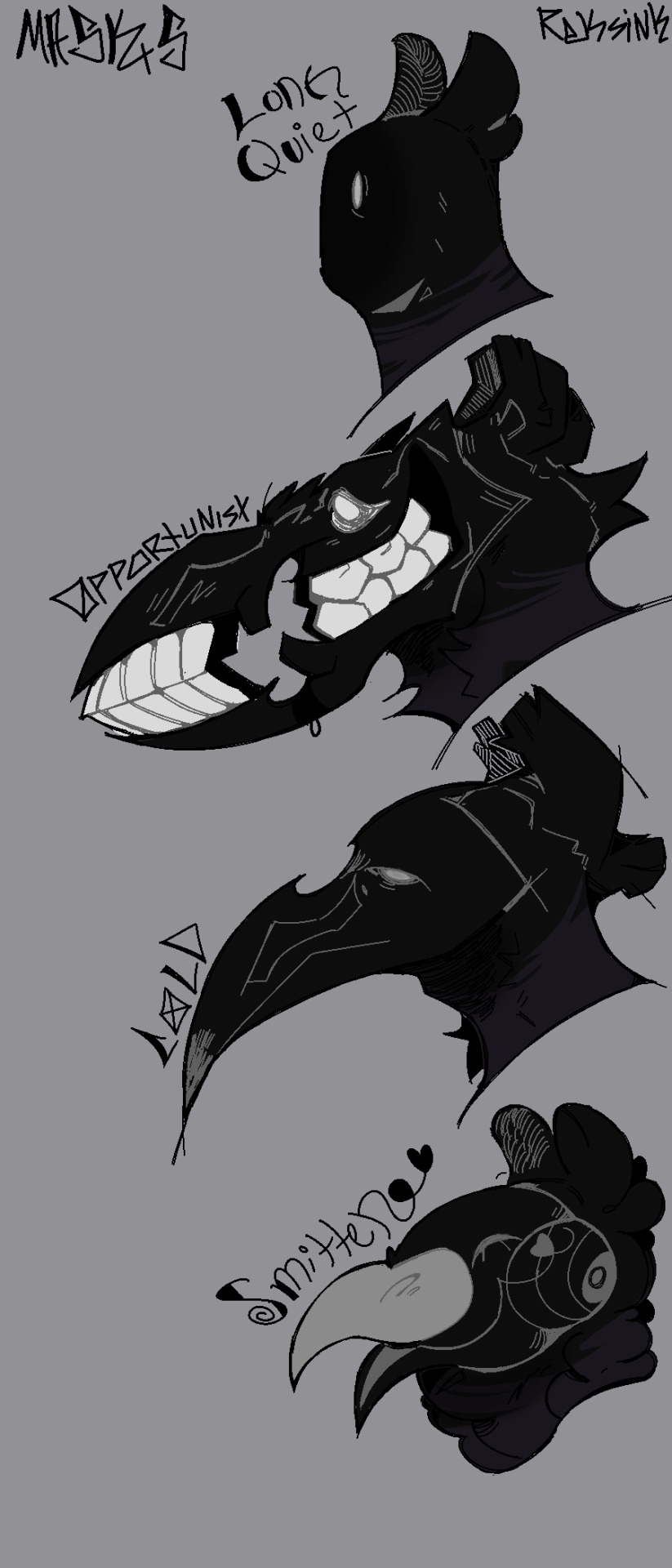

A Gaggle of Masks
#slay the princess#stp#stp long quiet#stp opportunist#stp cold#stp smitten#my art#fanart#Was a long to coming but I finally have Slay the Princess!!!#I have about 19 hours in as time of writing hehe#Shown here is my interpretation of how the various voice work#They're mask similar to ones used for plays & theater#With the Long Quiet not being about to quite transform it's body forms temporary fleshy masks for each voice#But of course they're just that; masks; there's no true change to Long Quiet#And once the Long Quiet takes proper look at himself in the mirror the voices cease#They can no longer speak#Design wise these are very much in the workshopping phase and I might go back and fix thing up here and there#BUT#For now I really do like what I have for the Opportunist#Though that may be because I already really look in-game design hehe#Sigh there's no much design potential for this game I hope I'll survive my swim in boundless ideas
464 notes
·
View notes
Text

#rotom#rotom mower#or is it rotom mow#idk but this thing had so many forms#this was the ultimate winner by a LONG shot even with multiple votes allowed on the poll#muncher#if you wanna see all the various angles. you'll have to check the poll in the discord server
150 notes
·
View notes
Text
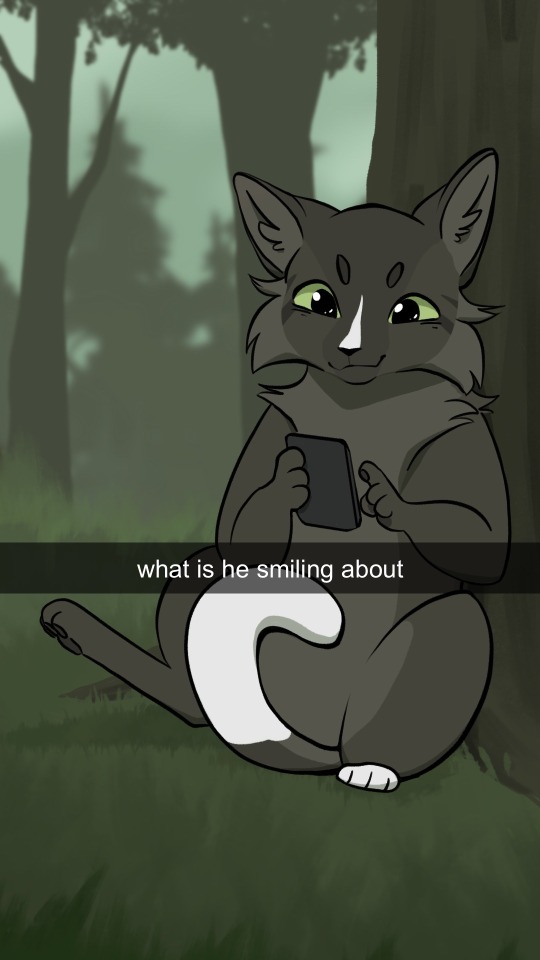
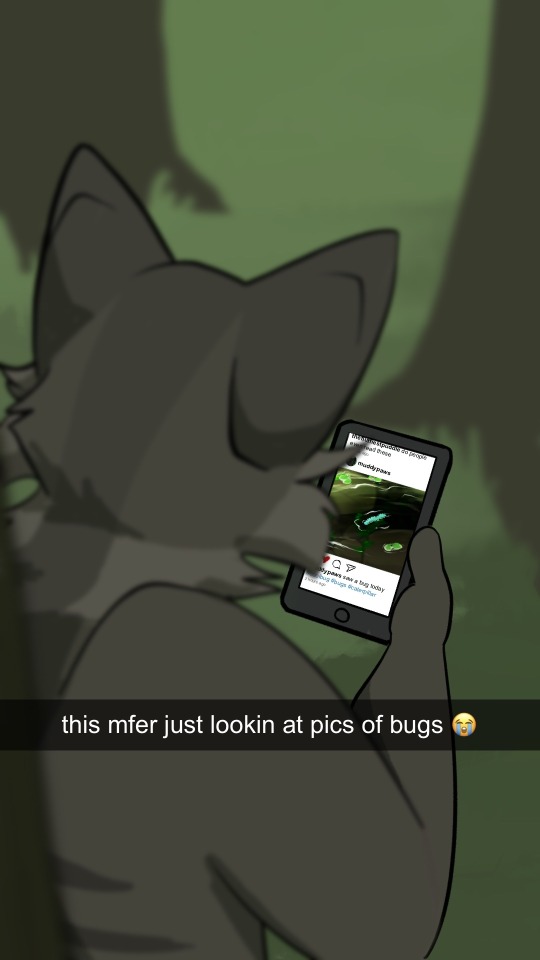
#rye's art#whitepaw#au where everything is the same except micaclan inexplicably has access to various forms of social media#pics/commentary from hawkpaw btw
79 notes
·
View notes
Text

The polecat is the most common domesticated ratter and companion animal in the eastern Inner Seaway lands.
Their wild ancestors are less solitary than most mustelids, though do not have particularly complex social structures. Females (usually related) will accumulate in groups of 2-10 individuals (up to 30 in exceptional cases of high prey availability), sharing a territory and den site. Males form their own territories, which will overlap heavily with those of females.
The social hierarchy of these groups is mostly based upon age, with the eldest individuals claiming the best den sites and access to resources and mates. Their social behavior includes allogrooming, sharing of dens, and occasional sharing of prey. Their social bonds are not strongly reinforced, however. They provide no mutual care for young (and dominant females are known to kill the young of low ranking females when prey is scarce), and colonies will readily divide and disperse when their population wholly outstrips prey availability. They often move over open terrain in loose groups as means of defense against predators, but do not hunt cooperatively. Their favored prey is rodents, but they will take birds, small lizards and snakes, and the occasional large insect. They will occasionally coordinate group attacks against large threats (particularly snakes, which threaten their pups within dens).
It is not clear where or when they were domesticated. They likely domesticated themselves in conjunction with early farming practices, preying on the rodents that were attracted to grain stores and gradually being accommodated to and appreciated by human farmers. Wild polecats that could ostensibly be their ancestors can be found on both sides of the Mouth of the seaway, and evidence of domesticated polecats stretches back to prehistory on both sides as well. This would suggest either separate domestication events, or an unrecorded crossing of the Mouth by boats and possible human settlement event during the neolithic period (as most human settlement east of the Inner Seaway occurred in the paleolithic and was a long, slow, roundabout dispersal over land).
Domesticated polecats are frequently kept around as ratters. They are not as efficient as cats over open terrain, but are fairly effective with their ability to fit into confined spaces in pursuit of prey. The domestication process has rendered them more inclined towards close socialization than their wild ancestors, and they readily bond with their owners and with other unrelated polecats. Feral colonies are most distinct from wild colonies in that they form tighter social bonds and practice extensive alloparenting, with mothers often allowing unrelated young in the same colony to suckle, and sometimes even adopting orphans. Feral polecats have interbred with and/or displaced wild ones in many parts of their range, and true wild polecats are increasingly rare.
The Burri deity Tingari is the goddess of granaries, and she is often depicted as a polecat, or with one in each hand. Polecat figurines are placed in granaries to confer the goddess' protection from rodents, insects, rot and disease. This practice has been naturalized in many places formerly colonized by Imperial Bur, though often as a general ward against grain pestilence or integrated into native religious conventions rather than as representations of the Burri god.
#creatures#Should probably give them an actual name instead of just 'polecat' because they are pretty different from the various real-world animals#called 'polecats' and are not the same thing as ferrets (which are domesticated european polecats)#Like they're BASICALLY ferrets in form but not behaviorally#Though the polecat name fits into my grand design of having as many animals called 'cats' that are not actually cats as possible
148 notes
·
View notes
Text
One thing I love about Clone Wars fanart is how much of it is just various characters napping on each other. We all took one look at them and decided that what they really need is snuggles and sleep.
#the codywan sleep bingo has done excellent things for my dash#but it is a common trend for both the jedi trio and various clone groupings#my favourite form of ship art - whatever the relationship type#meta
593 notes
·
View notes
Text
had to make an appointment with the social security office and after waiting an hour to speak to them the woman told me she had “never heard” of new york city
#i had to list of various cities nearby that MIGHT have offices so she could check each one. she could not search for the ones closest to me#she also could not find an early morning or late afternoon appointment. i had to give her each day to check individually#she also could not tell me which documents to bring. she said to bring everything and then at the appointment we’ll see if it’s sufficient#which is awesome cuz i have to leave work early and take 2 different forms of public transit to get there#and you may be thinking well this woman may be from another country that’s why she doesn’t know new york. no she’s american#it’s times like this when all you can do is laugh. 😐
97 notes
·
View notes
Note
(for maximum awkwardness) bbts!Kon has to work with B on some JL thing idk
Kon: sir… why did ghostmaker call you babygirl
Batman: let’s not talk for a bit
[later]
kon: sooo we ended up working with ghost-maker on this mission? and uh--
tim: for my health, do not finish that sentence.
#tim's mental health is a house of cards and all the bottom cards are just various forms of Plausible Deniability#ghostbat#vinelark asks#bbts extras
80 notes
·
View notes
Text


#anyways I dislike that Pills That Make You Green hack#the first one was fine but making an artistic identity out of it has just turned into Even Lower Budget South Park#she has nothing to say besides how trans people who disagree with her are Mentally Ill#in the form of various little strawman comics
121 notes
·
View notes
Text

A peek at something I’ve been working on over the past couple months 🍂
#elden ring#morgott#morgott the grace given#morgott the omen king#it’s suuuper cute that his rain of holy swords forms a star shape#I have nothing but respect to the people who draw him and Mohg on a regular basis#wdym you draw so many horns each time. and in various angles????#stylizing this man was HARD but I’m finally happy with how he’s looking#my merch art takes a billion years bc I’m a perfectionist + I refuse to make anything I wouldn’t die to have#plus I keep having new merch ideas so I keep delaying sending stuff to a manu sighs
99 notes
·
View notes
Text
I’d like to propose a performance of Hamlet in which the audience is addressed, looked at, and treated as if they were there but ONLY by characters who have gone mad.
in Act 2, when Hamlet’s pretending to go mad, while in the presence of Polonius and others, he sort of pretends to look at the audience, but always glancing over, looking sort of in the wrong direction, putting on a show for the only eyes he thinks are watching. When he’s alone and doing his soliloquies, it’s clear that he’s talking to himself, even though we’re listening in.
And it continues this way until Act 3 Scene 4, when Hamlet runs Polonius through with the sword. For a moment after the deed is done, there’s a shocked silence on the stage. As Hamlet goes to examine the body, he falters, slightly, as he becomes aware of just how many eyes are on him. And slowly; he looks at us, and through the rest of the scene his attention is torn between the audience and his mother, until the ghost appears (perhaps in the audience as well) and he’s… sort of put back on track. But from then on, all his soliloquies, asides, he begins to talk to us, in the audience.
And we notice the change, sure, but we don’t really get what it means, not until Ophelia goes mad, and while onstage she begins to give audience members flowers, to talk to them as the others call her crazy. And at that point most of us can make the connection.
From then until the play is over, Hamlet can’t fully ignore us. Every other character will, and does (besides maybe the gravediggers if you wanted to include anyone else), but we’re ever present in his sight. As he dies, we’re the ones he refers to when he says ‘you that look pale and tremble at this chance, that are but mutes or audience to this act’
#hamlet#shakespeare#am i a hamlet goes a little bit mad truther? perhaps#i just love to explore motifs of insanity in various forms of media#and i have some more opinions on how I’d adapt this to film
476 notes
·
View notes